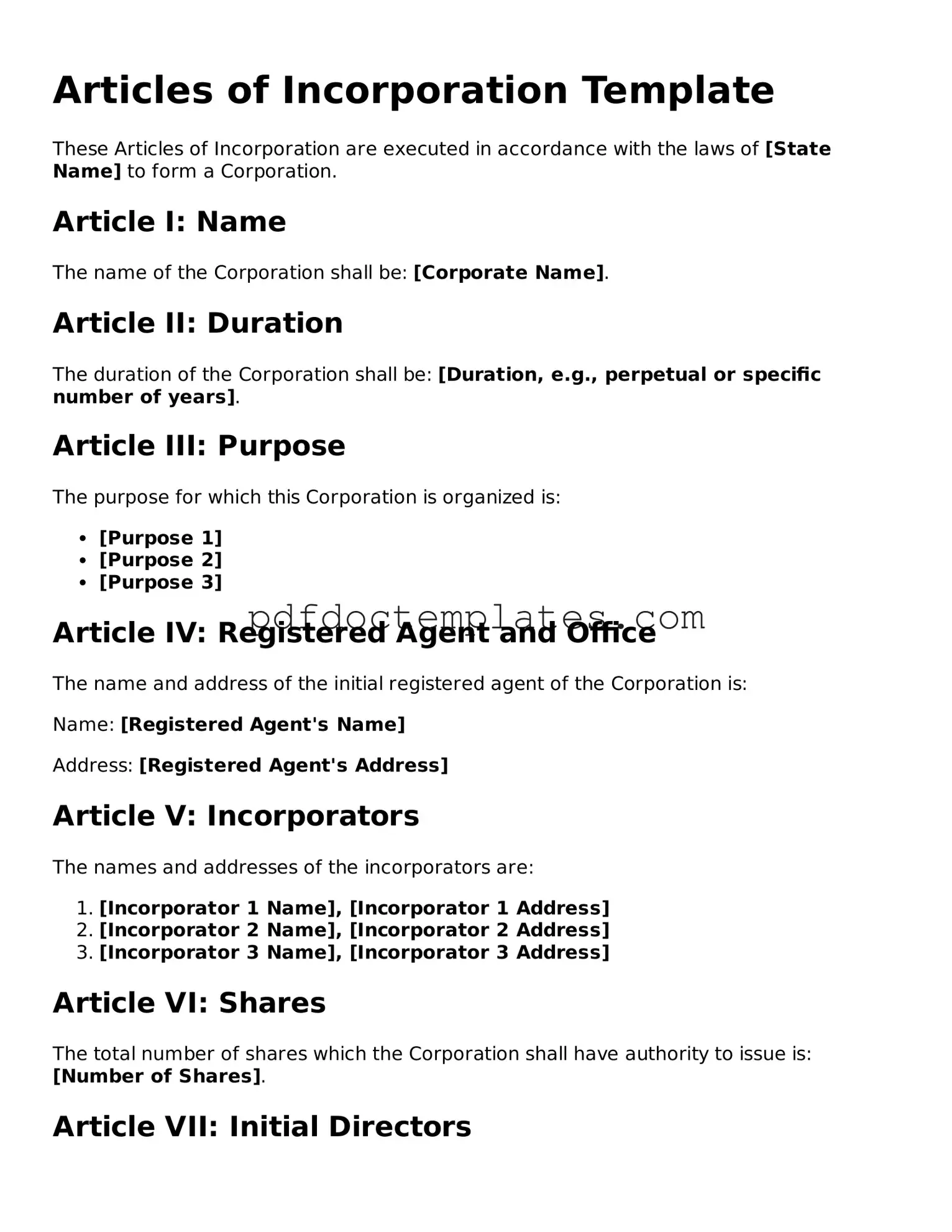Articles of Incorporation Template
These Articles of Incorporation are executed in accordance with the laws of [State Name] to form a Corporation.
Article I: Name
The name of the Corporation shall be: [Corporate Name].
Article II: Duration
The duration of the Corporation shall be: [Duration, e.g., perpetual or specific number of years].
Article III: Purpose
The purpose for which this Corporation is organized is:
- [Purpose 1]
- [Purpose 2]
- [Purpose 3]
Article IV: Registered Agent and Office
The name and address of the initial registered agent of the Corporation is:
Name: [Registered Agent's Name]
Address: [Registered Agent's Address]
Article V: Incorporators
The names and addresses of the incorporators are:
- [Incorporator 1 Name], [Incorporator 1 Address]
- [Incorporator 2 Name], [Incorporator 2 Address]
- [Incorporator 3 Name], [Incorporator 3 Address]
Article VI: Shares
The total number of shares which the Corporation shall have authority to issue is: [Number of Shares].
Article VII: Initial Directors
The number of initial directors constituting the board of directors of the Corporation is: [Number of Directors].
Article VIII: Indemnification
The Corporation shall indemnify its officers and directors to the fullest extent permitted by the laws of [State Name].
Signature
We, the undersigned incorporators, hereby declare and affirm under penalty of perjury that the facts stated herein are true and correct.
Executed on this [Execution Date].
Incorporators:
- [Incorporator 1 Signature]
- [Incorporator 2 Signature]
- [Incorporator 3 Signature]
